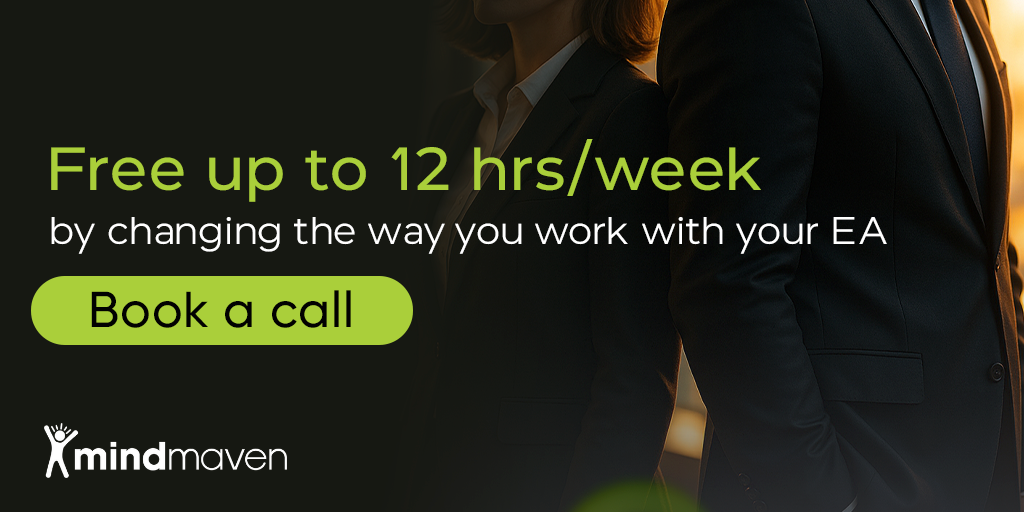
As a busy executive, sending thank you emails more often might seem like obvious advice. But what’s often overlooked is just how strategic thank you emails can be in building lasting, high-value relationships.
Gratitude is one of the most powerful, underutilized tools in your relationship-building toolkit. Not just because it’s the right thing to do—but because it creates relevant, meaningful, and memorable interactions with the people who matter most to your success.
The problem? Most leaders only express thanks when a specific trigger or event prompts it. For example:
-
A team member exceeds expectations,
-
A peer offers helpful feedback, or
-
A contact makes a valuable introduction.
These are all valid moments. But they’re expected.
The real power lies in the unexpected thank you—when you reach out not out of obligation, but out of genuine appreciation.
That’s when gratitude becomes a leadership asset. It surprises, uplifts, and strengthens trust in ways that reactive communication never could.
The Benefits of an Unexpected Thank You Email for Executives
Unlike routine gratitude that follows a trigger, unexpected appreciation is proactive. It signals that you’re thinking intentionally about your relationships, not just reacting to events.
This type of outreach isn’t driven by obligation or politeness; it’s rooted in authentic appreciation. And because it catches people by pleasant surprise, it lands with far more emotional weight.
Here are three ways unexpected thank you emails can meaningfully enhance your leadership relationships:
#1: You make the other person the center of attention
Saying “thank you” as a response to a favor someone did for you focuses the moment on you. But reaching out to someone out of the blue and thanking them for something unexpected puts the limelight entirely on them.
This will often lead to them feeling genuinely appreciated, and they’ll tie that positive emotion directly back to you.
#2: You prove you genuinely care
When you thank someone—especially unexpectedly—you send a very clear message: “I care about you and value our relationship.”
Your kind act shows them that you’re thinking about them at a time you might not be expected to, increasing the chances that they will keep you top-of-mind with them too.
#3: You offer vulnerability
By expressing gratitude, you’re making yourself vulnerable. You’re saying, “I couldn’t have done this alone. I needed your help, and I appreciate you.”
Vulnerability is a powerful source of connection. By being vulnerable yourself, you give them the opportunity to do the same, often deepening the bond you share.
How to Say Thank You Unexpectedly
To express gratitude unexpectedly, you have to be intentional and proactive about seeking opportunities to do so. Let me give you a quick example of how this might look:
It’s been six months since Aisha introduced you to someone who became a major client. You sent a genuine thank you email immediately following your meeting, and that was the end of it.
But six months later, you proactively sent this thank you email:
I just wanted to reach out again to let you know how much I appreciate your introduction to Chuck a while back. He became more than a great client but a friend as well, and it’s absolutely all thanks to you.
Your continued support and friendship mean the world, and I wouldn’t be where I am without everything you’ve done for me.
Thanks so much,
Xander
Do you see how that would probably be more impactful than the thank you email you sent immediately following the meeting? Because it wasn’t triggered by obligation, it’s likely to have a much more profound impact on the recipient.
Keep in mind: We’re not saying you should stop using triggered gratitude. Rather, we encourage you to start spending a little time each week intentionally thinking about who and what you’re grateful for and then expressing that in a genuine, meaningful way.
21 Great Opportunities to Send a Thank You Email
You can thank someone for just about anything so long as you feel genuine gratitude for them. As with anything, authenticity is key, and inauthentic thank you emails will usually be noticed and discarded by the recipient.
Need some inspiration? Here are some of our favorite reasons and opportunities to write a thank you email to someone in your network:
- Simply for being a friend,
- For being a reliable business partner,
- On the anniversary of having met one another,
- On the anniversary of having signed an agreement,
- For a small favor they did more than six months ago,
- For the positive traits you appreciate about them,
- For being a mentor,
- For offering their unwavering support,
- For never being judgmental toward you,
- For offering advice that made a positive difference in your life,
- For introducing you to someone of value,
- For an idea or concept they gave you,
- For being someone you can rely on,
- For introducing you to a tool, software, or best practice, you’re still using today,
- For going above and beyond on something small,
- For something they did for someone you care about,
- For creating great content that has been valuable to you,
- For telling you the truth (even when it’s hard),
- For inspiring you to overcome difficult odds,
- For their honest insight and feedback on your work, or
- For being willing to meet you in the first place.
Of course, these are just some suggestions for inspiration, and there are literally hundreds of other reasons you could use.
Consider scrolling through the names in your contact management system, choosing someone randomly, and asking yourself: “What about this person can I be thankful for?”
How to Send Thank You Emails More Often
The more you practice expressing gratitude through thank you emails, the more you can reap the benefits of it in your network.
Here are two powerful tips to turn thank you emails into an automated habit:
#1: Evaluate Any and All Value
Anytime you perceive something of value, don’t let it slip by unnoticed. Make a conscious note of it.
For example: Say a team member did an amazing job on a project. This potentially gives you a chance to thank two people: The team member and whoever introduced you to them.
Anytime you feel that “warm feeling” of gratitude, pause and ask yourself: “Why am I experiencing this?” See if you can trace it back to a person (or persons) who helped you feel that way. And if you can, thank them!
Let me give another example to really showcase how subtle and simple this can be:
Imagine you started a research campaign that led to a key appointment with a new business contact.
Even though you did most of the work that drove that campaign to success, it was your colleague’s idea to begin the campaign in the first place.
It may seem far away to attribute your hard-earned success to your colleague, but you can feel confident knowing they would really appreciate a genuine thank you email.
You never know where that gratitude might lead. Sometimes, one little experience can lead to five or more unique and powerful interactions with your network, increasing how top-of-mind you are and dramatically boosting the chances that they’ll send amazing opportunities your way.
#2: Intentionally Seek Gratitude
If you’re like most people, you probably experience warm feelings of gratitude many times over the course of the day. The trick is to train yourself to be aware of them.
Like with any habit, it takes practice and effort. Let me help you get the ball rolling with a quick exercise. The goal is to find ten people in your network you can send a thank you email.
Here’s what I want you to do:
Go back to the list of 21 reasons to express gratitude. Stop and think about each item on the list for 30-45 seconds. Do any names come to mind?
For example: If you’re on the “For being a mentor” item, just ask yourself who has given you valuable advice that made a difference in your life, no matter how small. Or think about a time you were struggling. Who was there to help?
If you’ve been in business for over five years, you can probably come up with at least ten names. And once that list is complete, figure out who hasn’t heard from you in the last 30 days.
If it’s over 50%, you’re probably missing out on valuable opportunities. There’s a good chance most people on that list would appreciate an unexpected thank you email, so start writing!
Bonus: How to Integrate Thank You Emails Into Your Workflow
Here at Mindmaven, we love to automate as many workflows as possible, and sending thank you emails is no different. This is a great place to start if your CRM program or contacts database has an automated alert system for when you haven’t had contact with someone in a set amount of time.
First, create a temporary category in your CRM specifically for “thank you” targets. Add all the people you came up with in the exercise above (and more if you can).
Then, in each contact’s notes section, briefly write your reason for thanking them. This makes it easy to draft a thank you email when the time comes.
And when you get that alert that it’s been more than 30 days since your last interaction, all you’ve got to do is open their profile, review your notes, and write the thank you email!
Want to create more time for the relationships that matter most?
At Mindmaven, we help executives change the way they work with their assistant to free up 12+ hours every week and make investing in relationship-building a seamless part of their daily routine.
Schedule a free 1:1 call today to learn how our personalized executive coaching can help you deepen your success-driving relationships—without adding more to your plate.


